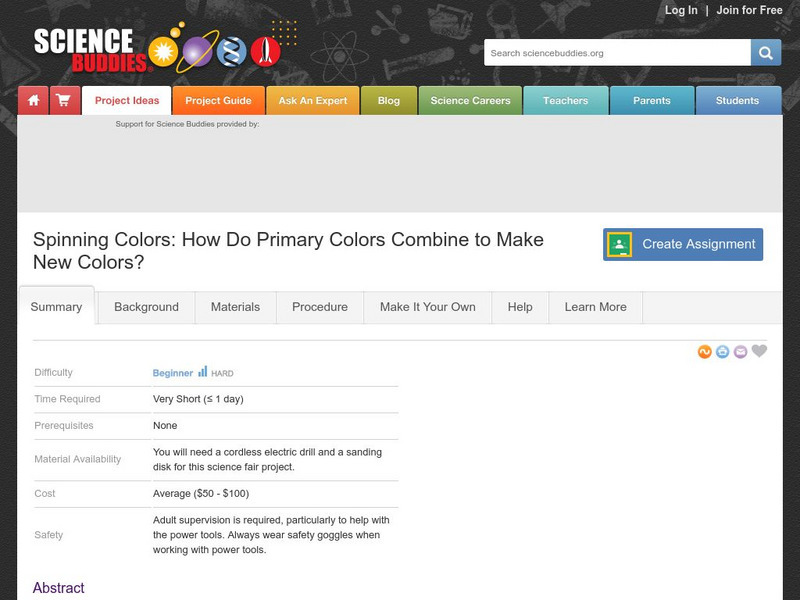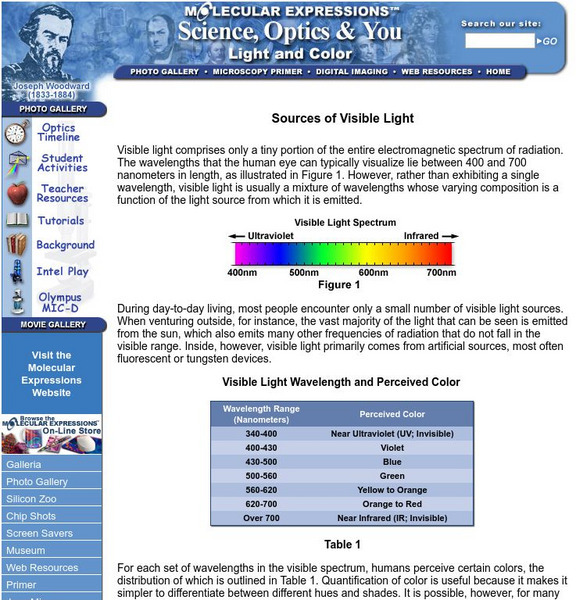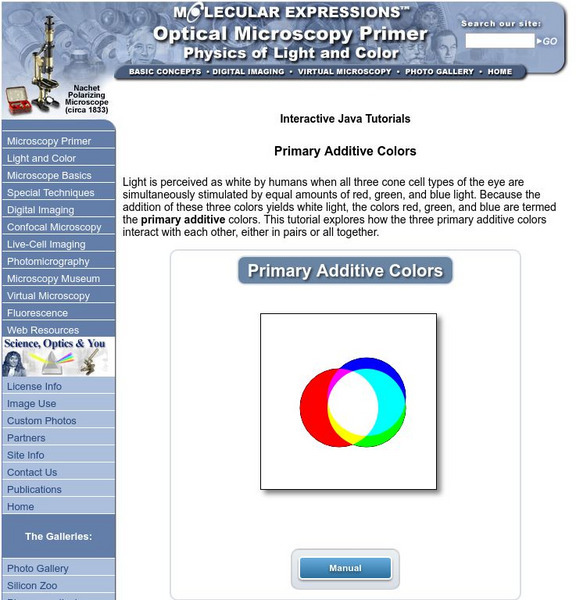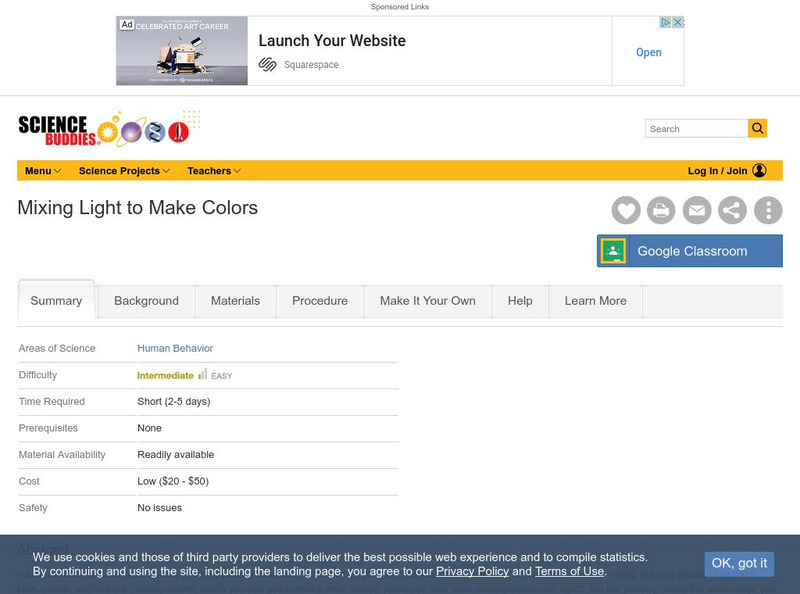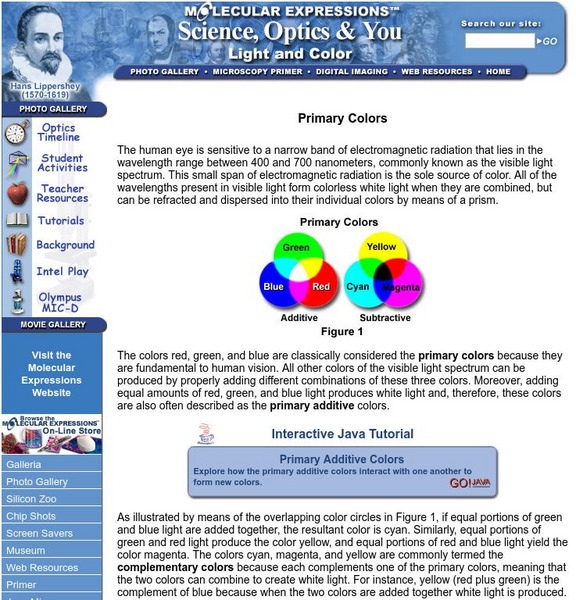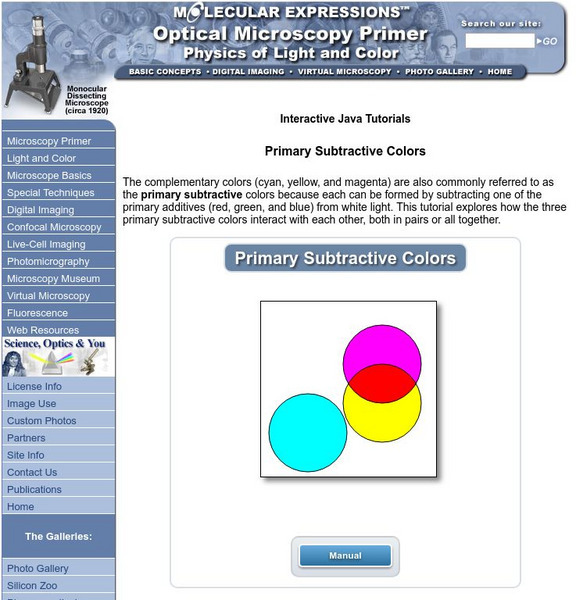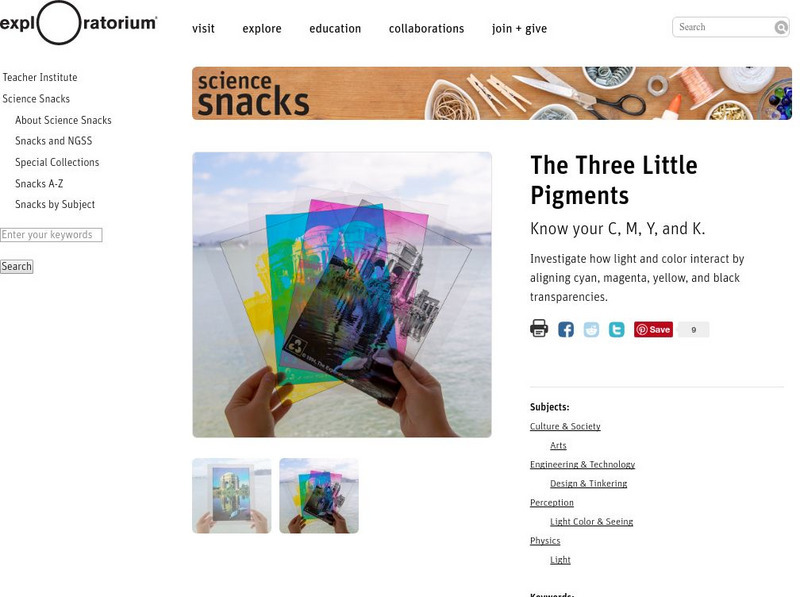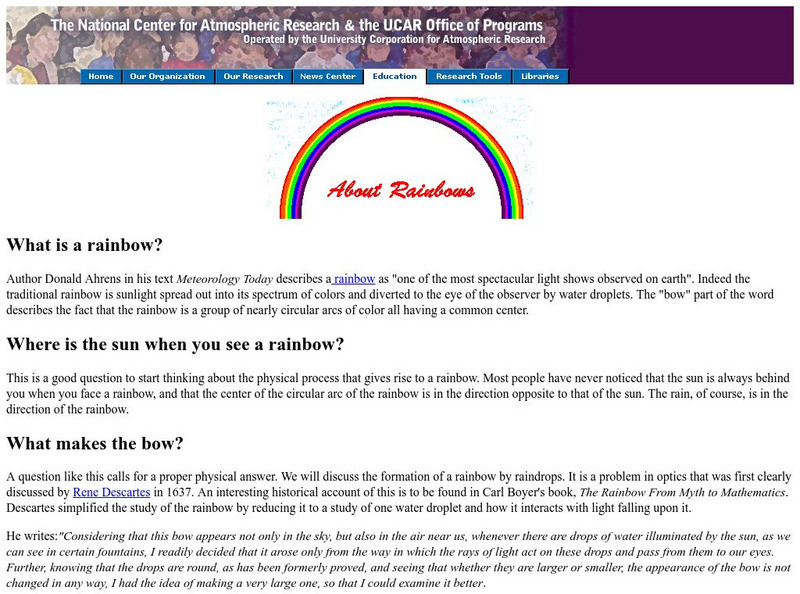Science Buddies
Science Buddies: Project Ideas: How Primary Colors Combine to Make New Colors
In this science fair project, paint color pie slices onto a wheel and spin the wheel on an electric drill. See how colors add together to make new colors. The Science Buddies project ideas are set up consistently beginning with an...
Project Britain
Primary Homework Help: Color Investigation Puzzle
Try making words on the screen disappear by changing the background color of this page. Add or subtract red, green, or blue, and see how light is made up of many different colors.
Florida State University
Florida State University: Light and Color: Sources of Visible Light
This site discusses primary lighting sources and gives information on the different properties and spectral characteristics of each. Also includes links to some interactive Java applets.
Physics Classroom
The Physics Classroom: Light Waves and Color: Color Addition
Through illustrated example problems, and some interactive practice, students learn about color addition and color perception.
TeachEngineering
Teach Engineering: Light Properties
Students learn about the basic properties of light and how light interacts with objects. They are introduced to the additive and subtractive color systems, and the phenomena of refraction. Students further explore the differences between...
Florida State University
Florida State University: Molecular Expressions: Primary Additive Colors
Manipulate the primary color circles of light to see how overlapping the circles affect the colors. An explanation is included.
Science Buddies
Science Buddies: Mixing Light to Make Colors
You know how to make new colors by mixing paint or crayons. For example, you get green by mixing yellow and blue, or orange by mixing red and yellow. With paint, blue, yellow, and red are primary colors, which you can use to make other...
Science Struck
Science Struck: Visible Color Spectrum Wheel
A brief explanation of the visible color wheel.
Florida State University
Florida State University: Molecular Expressions: Primary Colors
The concept of colors is discussed on this page. Read about primary colors, how complementary colors are created, what the process of color subtraction is, pigments and dyes, plus more. Also included are interactive Java tutorials.
Science Struck
Science Struck: Color Spectrum Chart With Frequencies and Wavelengths
Read about the visible light spectrum and learn the frequencies and wavelengths for each of the primary and secondary colors.
Florida State University
Florida State University: Molecular Expressions: Primary Subtractive Colors
Manipulate "pigmented" color discs to see how mixing subtractive colors affect the overall color.
University of Colorado
University of Colorado: Physics 2000: Temperature and Absolute Zero
A thorough, multipage discussion of color and color television sets that explains how an image is formed on the television using red, green, and blue light. Understandable discussion, excellent graphics, and many interactive Java applets.
NumberNut
Number Nut: Basic Topics: Shapes, Symbols, and Colors: Colors
A short explanation of how we see color and what each of the primary and secondary colors symbolize.
Exploratorium
Exploratorium: Science Snacks: The Three Little Pigments
For this activity, you print different colors of the same image onto acetate, then explore the different color effects you get when they are overlaid on each other in various combinations.
University Corporation for Atmospheric Research
Ucar: About Rainbows
This site from the University Corporation of Atmospheric Research provides an illustrated article about the phenomenon of rainbows.
